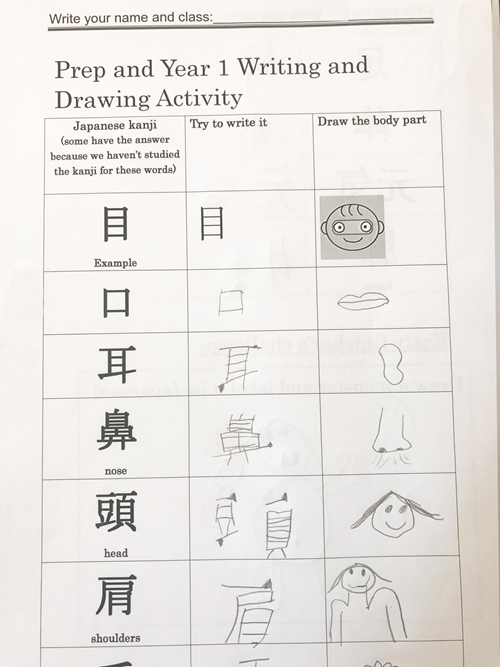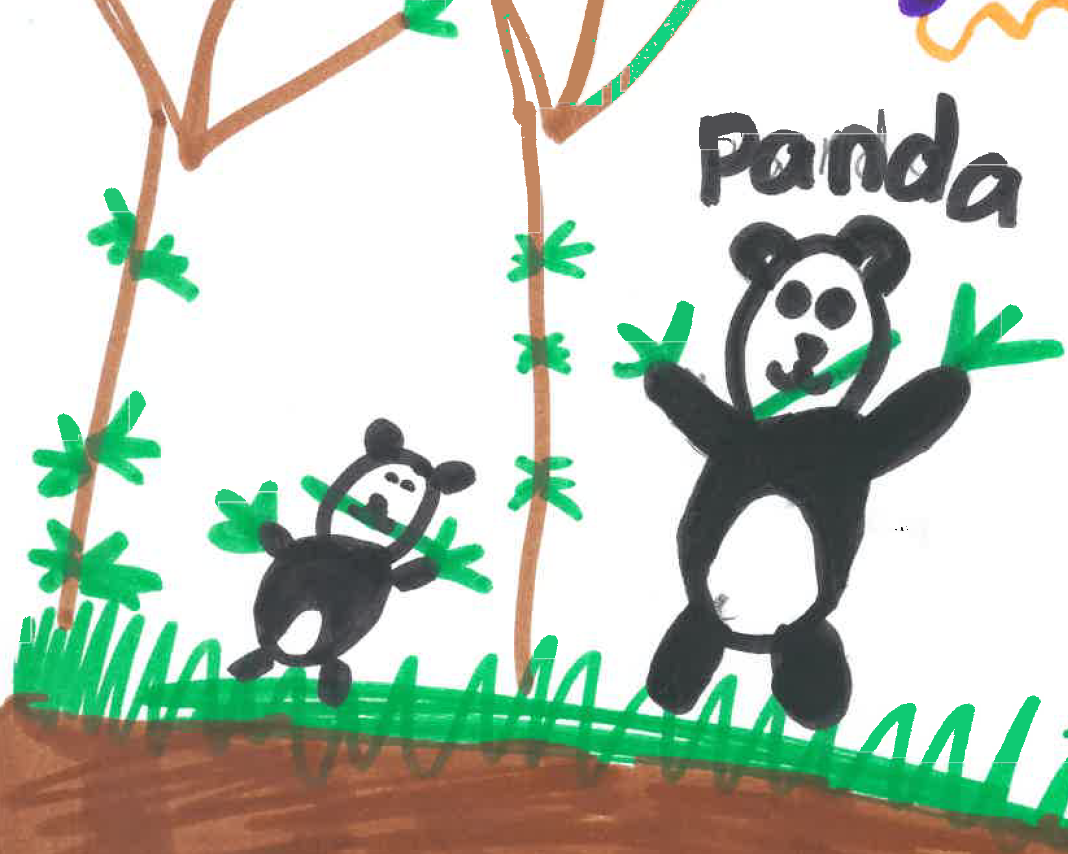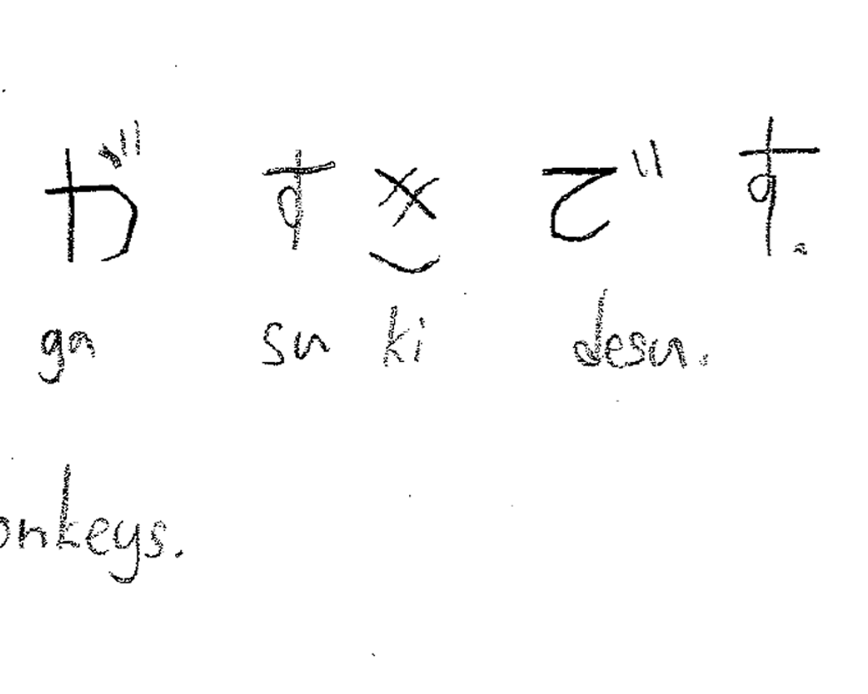Languages: Japanese - Satisfactory - Foundation to Year 2
Portfolio summary
This portfolio of student work shows that the student can interact with the teacher and peers through play- and action-related language (WS1, WS3). The student uses formulaic expressions and appropriate gestures in everyday interactions such as exchanging greetings and farewells (WS3). The student uses visual, non-verbal and contextual support such as pictures (WS3, WS4, WS5), gestures (WS3), facial expressions and props to make meaning (WS3) of simple texts (WS2, WS3, WS4, WS5, WS7). When listening to simple repetitive spoken texts, the student identifies key words (WS3) such as names or numbers of objects (WS2, WS4) or people, and demonstrate comprehension by actions (WS3), drawing or labelling (WS3, WS4). The student responds to instructions through actions (WS2) and responds to questions (WS2) with single words (WS2) and set phrases and by selecting images or objects. The student presents information about themselves (WS7), their family, friends and favourite things (WS5) at word and simple sentence level (WS3, WS5), using formulaic and modelled language (WS3, WS5, WS6, WS7). The student describes people and objects using adjectives to indicate colour, shape and size (WS6). The student mimics Japanese pronunciation (WS2), intonation and rhythm (WS4) through shared reading (WS1) and singing (WS3, WS4, WS6). The student recognises and begins to write single kanji (WS3, WS4, WS5, WS7), 46 hiragana symbols, and some hiragana words (WS7). The student demonstrates understanding of hiragana as well as kanji by actions such as matching, labelling and sorting (WS3, WS4, WS5). The student translates and interprets examples of everyday Japanese language use and cultural behaviours such as the exchange of greetings (WS3) or thanks, terms of address and some formulaic expressions and behaviours (WS3).
The student identifies the three different scripts in Japanese, hiragana, kanji (WS3, WS4, WS5, WS7) and katakana. The student understands that hiragana represents the basic units of Japanese sound and applies that knowledge in communication. The student knows that kanji represents meaning (WS3, WS4) as well as sounds (WS1, WS2, WS3, WS4), and that katakana is used for borrowed words. The student knows that stroke order in writing characters is important (WS3, WS4). The student identifies patterns in Japanese words and phrases (WS5, WS6, WS7) and make comparisons between Japanese and English (WS5, WS6, WS7) in greetings and in simple sentences (WS6, WS7).






